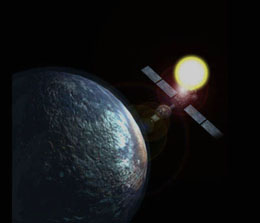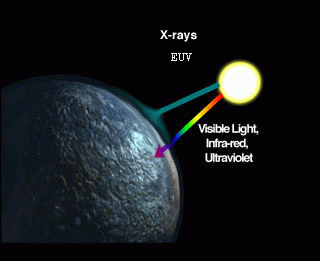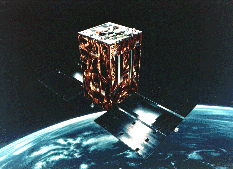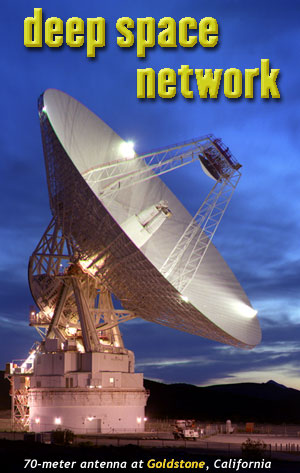
Today there are many telescopes on the Earth, and in orbit around Earth, which observe the Sun. Ground-based telescopes are very useful for many aspects of solar observing and have provided many important discoveries over the years. However, an important segment of the Sun's observable energy does not penetrate the atmosphere and therefore cannot be observed from Earth.

The Sun's atmosphere, which plays an important role in Space Weather, is extremely hot, more than one million degrees. When gas is this hot, it emits high energy radiation known as Extreme Ultraviolet (EUV) and X-ray radiation. EUV and X-rays are used to view the Sun's corona since the they allow solar physicists to differentiate the hot and cold parts of the Sun. By taking pictures of the Sun at these wavelengths, we can learn how the gas is heated and how the Sun affects the Earth and its space environment. Through an understanding of solar processes, we can gain the necessary tools to predict Sun-driven terrestrial effects.
X-ray images of the Sun: from Earth and from space


Fortunately for us, this high energy radiation from the Sun is blocked by the atmosphere of the Earth. Of course, if you are an astronomer who is interested in observing these high energy radiations then the atmosphere is somewhat bothersome. Still, it is better to be a live astronomer complaining about the blocking of X-rays from the Sun than a not-so-healthy one with all the X-rays she could possibly want! There is a simple solution to the dilemma of how to observe EUV and X-ray radiation — and I am sure you have guessed the answer already.
Since the EUV and X-ray radiation cannot come to us (through the atmosphere), we must go to them. By observing the Sun from space, far above the atmosphere, we can begin to explore these fascinating photons.

 Imaging the Sun from space is the key to studying and understanding solar phenomena and to the early warning of impending solar storms and the prevention of satellite and communication network disruptions. But obtaining these images is extremely difficult. To do so requires that sophisticated instruments be designed and put onto spacecraft where they are no longer directly accessible to scientists and engineers. The instruments must be designed to withstand the harsh environment of space without failure; once the spacecraft is launched, it is not normally possible to fix any problems which might occur.
Imaging the Sun from space is the key to studying and understanding solar phenomena and to the early warning of impending solar storms and the prevention of satellite and communication network disruptions. But obtaining these images is extremely difficult. To do so requires that sophisticated instruments be designed and put onto spacecraft where they are no longer directly accessible to scientists and engineers. The instruments must be designed to withstand the harsh environment of space without failure; once the spacecraft is launched, it is not normally possible to fix any problems which might occur.

Once the telescope is in space, the data (which are often converted to images) must be transmitted back to the ground via radio signals, a sometimes tedious process compared to the fast Internet connections many of us have become accustomed to on the Earth. Because the satellite is high above the Earth, adjusting and positioning the telescope becomes a difficult task which involves relaying commands by radio transmission. Everything has to be perfect the first time, because the satellite cannot come back down! Despite all the difficulties of observing the Sun from space, the spectacular images of the Sun brought back by satellites such as TRACE, SOHO, RHESSI and currently SDO, demonstrate how worthwhile the effort is. Scientists have learned, and continue to learn, a great deal about the Sun from these space missions, from the nature of the corona, to solar flares and CMEs which affect the space environment around the Earth.
Back to today's topic